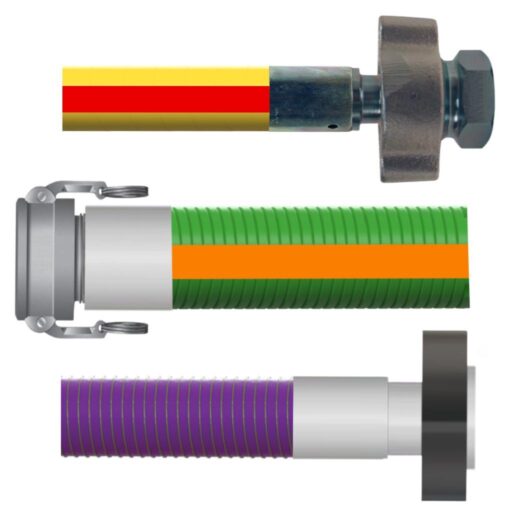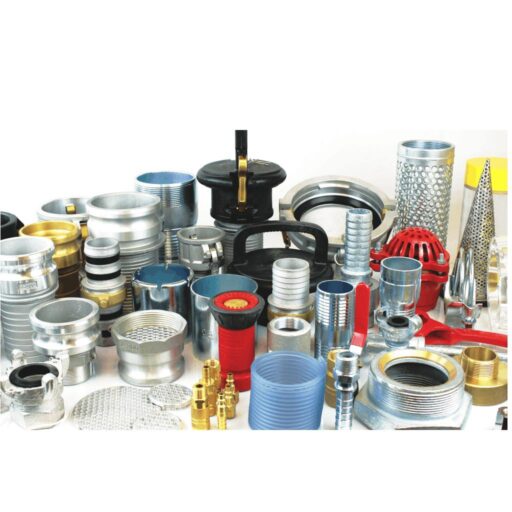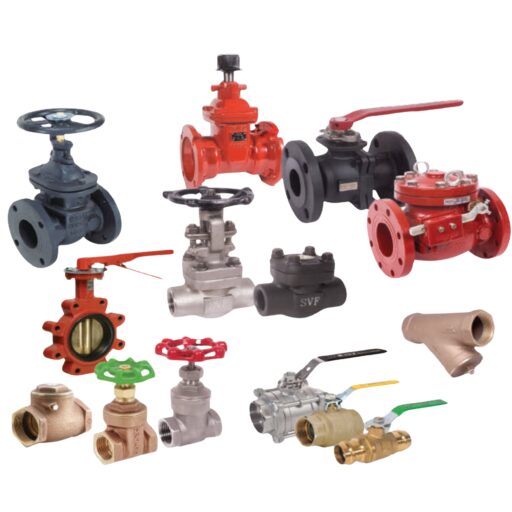Chemical resistant hoses are critical in industrial settings where the safe and efficient transport of chemicals is a primary concern. These hoses must withstand harsh chemical substances, high pressure, and extreme temperatures to ensure that they do not break down, leak, or cause any harm to the workers or environment.
With so many types and materials available, selecting the right hose for your specific needs can be challenging. This guide aims to provide a comprehensive overview of chemical resistant hoses, including types, materials, and factors to consider when choosing the right hose for your industrial needs.
Understanding Chemical Resistant Hoses
Chemical resistant hoses are specialized hoses designed to transport various chemicals safely and efficiently. They come in different types, sizes, and materials, and choosing the right one is crucial to ensure the safety and integrity of your operations.
Types of Chemical Resistant Hoses
There are several types of chemical resistant hoses, each with unique features and benefits that make them suitable for specific applications. Some common types of chemical resistant hoses include:
There are several types of chemical resistant hoses, each with unique features and benefits that make them suitable for specific applications. Some common types of chemical resistant hoses include:
- PTFE Hoses: These are made of polytetrafluoroethylene (PTFE), a high-performance plastic known for its excellent chemical resistance and low friction coefficient. PTFE hoses are ideal for handling corrosive and aggressive chemicals, as well as high temperatures and pressures.
- Composite Hoses: These hoses are made of multiple layers of different materials, such as thermoplastics, metals, and fabrics. Composite hoses are flexible, lightweight, and offer excellent chemical resistance against a wide range of chemicals.
- Rubber Hoses: Rubber hoses are versatile and commonly used in industrial applications. They are suitable for transporting a range of chemicals, including acids, alkalis, and solvents, and offer good resistance to abrasion and weathering.
- Metal Hoses: These hoses are made of various metals, such as stainless steel, and are ideal for transporting high-temperature and high-pressure chemicals. Metal hoses are durable, long-lasting, and offer excellent resistance to corrosion.
Materials Used in Chemical Resistant Hoses
The materials used in chemical resistant hoses are critical in determining their chemical resistance and overall performance. Some common materials used in chemical resistant hoses include:
- PTFE: As mentioned earlier, PTFE is a high-performance plastic known for its excellent chemical resistance and low friction coefficient. It is an ideal material for handling corrosive and aggressive chemicals.
- EPDM: Ethylene Propylene Diene Monomer (EPDM) is a synthetic rubber material known for its excellent chemical resistance and high-temperature resistance. It is commonly used in industrial applications to transport chemicals such as acids, alkalis, and solvents.
- FKM: Fluorocarbon rubber (FKM) is a high-performance material known for its excellent chemical resistance and high-temperature resistance. It is ideal for transporting aggressive chemicals and is commonly used in chemical processing plants and refineries.
- Stainless Steel: Stainless steel is a metal alloy known for its excellent resistance to corrosion and high-temperature resistance. It is commonly used in metal hoses for transporting high-temperature and high-pressure chemicals.
Standards for Chemical Resistant Hoses
Several organizations set standards for chemical resistant hoses to ensure their safety and performance in various applications. Some of these standards include:
- EN 13765: This standard specifies requirements for composite hoses for handling petroleum products and chemicals.
- EN 12115: This standard specifies requirements for rubber hoses for handling a range of chemicals, including acids, alkalis, and solvents.
- ASTM D380: This standard covers the testing and performance of rubber hoses for use with a range of chemicals, including acids, alkalis, and solvents.
- ISO 11237: This standard specifies requirements for hydraulic hoses for use in various applications, including chemical processing plants and refineries.
Understanding the different types and materials used in chemical resistant hoses, as well as the standards that regulate their safety and performance, is critical in selecting the right hose for your industrial needs.
Factors to Consider When Choosing Chemical Resistant Hoses
Choosing the right chemical resistant hose for your industrial needs involves considering several important factors. Here are some key factors to keep in mind:
- Type of chemical to be transported: The type of chemical being transported is the most critical factor to consider when selecting a chemical resistant hose. Different types of hoses are designed to handle specific chemicals, and using the wrong type of hose can lead to dangerous situations. It is important to know the chemical properties, concentration, and temperature of the material being transported to choose the appropriate hose material.
- Temperature and pressure requirements: The temperature and pressure requirements of the application are crucial factors to consider when choosing a chemical resistant hose. Different hoses have different maximum temperature and pressure limits, and exceeding these limits can cause the hose to fail, leading to leaks or other hazards.
- Hose size and length: The size and length of the hose required will depend on the amount of material being transported and the distance it needs to travel. It is important to choose a hose with an appropriate diameter and length to ensure efficient and safe transportation of the chemical.
- Flexibility and bend radius: The flexibility and bend radius of the hose are important factors to consider, especially when working in tight or confined spaces. Hoses with a smaller bend radius are more flexible and easier to maneuver, but they may not be suitable for high-pressure applications.
- Electrical conductivity: In some applications, it is important to use a hose with electrical conductivity to prevent the buildup of static electricity. This is especially important when transporting flammable or explosive materials.
- Environmental factors: The environment in which the hose will be used should also be considered. Factors such as exposure to sunlight, ozone, and chemicals can affect the performance and lifespan of the hose.
Common Applications of Chemical Resistant Hoses
- Chemical manufacturing and processing: Chemical resistant hoses are an essential component in many industrial settings, including chemical manufacturing and processing, the oil and gas industry, pharmaceutical industry, and the food and beverage industry. These hoses play a crucial role in safely and efficiently transporting chemicals and other fluids through various industrial processes.In the chemical manufacturing and processing industry, chemical resistant hoses are used to transfer a wide range of chemicals, acids, and solvents. These hoses are often used in reactors, mixing vessels, and storage tanks, where they need to withstand high temperatures and pressure.
- Oil and gas industry: Chemical resistant hoses are also used in the oil and gas industry, where they are used to transfer oil, fuel, and other chemicals through pipelines and storage tanks.
- Pharmaceutical industry: The pharmaceutical industry relies on chemical resistant hoses to transport various liquids, including solvents, acids, and base materials. These hoses need to be compliant with FDA regulations and meet stringent quality and safety standards. They are often used in applications such as drug production, pharmaceutical research, and laboratory settings.
- Food and beverage industry: The food and beverage industry also makes use of chemical resistant hoses to transport various fluids, including juices, dairy products, and food-grade chemicals. These food grade hoses need to be compliant with FDA and USDA regulations and meet stringent hygiene and safety standards. They are often used in applications such as beverage processing, food production, and dairy processing.

Maintenance and Care of Chemical Resistant Hoses
Maintaining chemical resistant hoses is crucial to ensure their longevity and reliability. By following proper maintenance and care procedures, you can extend the life of your chemical resistant hoses and minimize the risk of leaks or failures. Here are some maintenance and care tips for chemical resistant hoses:
- Proper Storage: Storing hoses in a safe and dry location is critical to protecting them from damage. Hoses should be stored away from direct sunlight, heat, and chemicals. They should also be kept off the ground and hung on hooks or racks to prevent kinks, twists, or other types of damage.
- Regular Inspections: It’s important to regularly inspect hoses for signs of wear, damage, or degradation. Check for cracks, bulges, cuts, or other signs of damage, and replace hoses as needed. Inspect fittings and couplings for signs of corrosion or wear, and replace any damaged parts.
- Cleaning and Disinfecting: Chemical resistant hoses should be cleaned and disinfected regularly to prevent contamination or buildup of chemicals or other materials. Use a mild detergent and warm water to clean hoses, and rinse thoroughly. Avoid using harsh chemicals or high-pressure washers, as these can damage the hoses.
- Repair and Replacement: If a hose is damaged or shows signs of wear, it should be repaired or replaced immediately. Don’t attempt to repair hoses yourself unless you have the necessary expertise and equipment. Instead, contact a professional hose supplier or manufacturer for assistance.
Conclusion:
Selecting the right chemical resistant hose is crucial for ensuring the safe and efficient transfer of chemicals and other hazardous materials in various industrial applications. The wrong type of hose can lead to serious consequences, such as leaks, contamination, and even personnel injuries. Therefore, it is important to carefully consider the chemical composition, pressure and temperature requirements, and other environmental factors before choosing a hose.
When selecting a chemical resistant hose, it is also essential to take into account the specific needs and requirements of your industry. This includes factors such as the frequency of use, the type of chemical being transferred, the length of the hose required, and the type of fitting needed for the hose. It is also important to consider the durability and lifespan of the hose, as well as the ease of maintenance and repair.
In summary, choosing the right chemical resistant hoses for your industrial needs requires careful consideration of several factors, including chemical resistance, temperature and pressure requirements, environmental factors, industry-specific needs, durability, and ease of maintenance. By taking these factors into account, you can ensure that you select a high-quality, reliable, and durable hose that meets your specific requirements and ensures the safe and efficient transfer of chemicals and other hazardous materials in your industrial application.
For more info, visit us at Shipyard Supply!
















